A Photo Journey of Our March Trip (II)
18 days and 6 places - Part Two: Huangshan and Hongcun
This spring, my husband and I celebrated our birthdays with a March trip to China, visiting places that had long been on our wish-to-visit list.
In 18 days, we traveled to six different cities/towns. There is so much I want to write, but I am not quite ready to dig deep into my thoughts. So, I want to start telling the stories about the journey through the lens of my phone camera.
This is part two of the series. You can read part one here.
Depending on your email provider, you may want to read this newsletter via a browser or the Substack App.
黄山 Huangshan (a.k.a Yellow Mountain)
There are many great mountain ranges and peaks all across China. Five of the most renowned mountains are called 五岳—the Five Great Mountains1.
There is a saying that compares the popularity of the Five Great Mountains to the subject of this part of our journey, Huangshan:
五岳归来不看山,黄山归来不看岳。
After returning from the Five Great Mountain Deities, no other mountains impress; once visited Huangshan, the deities lose their allure.
Huangshan, or the Yellow Mountain, is a mountain range located in southern Anhui province in eastern China. The name comes not from the color yellow, but from the legendary Yellow Emperor2, said to have ascended to heaven there. A UNESCO World Heritage Site known for its stunning natural scenery, Huangshan and its Four Wonders—pine trees, rocks, clouds, and hot springs—have inspired countless poets, painters, and travelers for centuries. Its jagged, mist-covered granite peaks rise dramatically, with the tallest Lotus Peak reaching 1,864 meters (6,115 ft), offering awe-inspiring views. Its sea of clouds produces a surreal phenomenon, when clouds swirl between peaks like ocean waves. Its hardy pine trees rise from boulders of rock, twisting along and clinging to the cliffs … You get the picture, right?
Here are the images of Huangshan other people saw and captured:
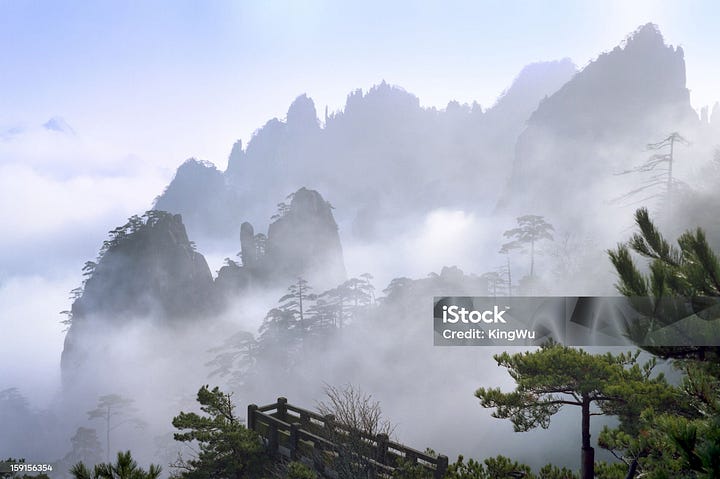

On the day of our hike, a cable car took us to Huangshan’s White Goose Station, where we began our journey on foot—first ascending to the peak, then crossing over and descending to a cable car station on the other side of the mountain. The hike involved a cumulative elevation gain of 400 meters (1,300 ft) in the first half, followed by continuous, steep, single-lane steps down in the second half.
A bright, sunny day with blue skies greeted us—along with a crowd of 15,000 visitors (according to that day’s total ticket sales). The famous (and much-anticipated) misty fog and sea of clouds were missing.
To top it off, I had completely overestimated my physical abilities and underestimated the harshness of the terrain. The hike turned out to be a real-life lesson in a popular saying: 想象很丰满,现实很骨感—"Imagination can be plump and round, reality but all bones and ground.”
Needless to say, I survived—though just barely—a journey of 11.4 km (7 miles), composed almost entirely of steps, up and down, up and down, and more ups and downs.
Here are the images of Huangshan I managed to capture—one hand clinging to the steel cable rail, catching my breath, resting my knees, all while trying to avoid 15,000 fellow hikers walking into the frame.
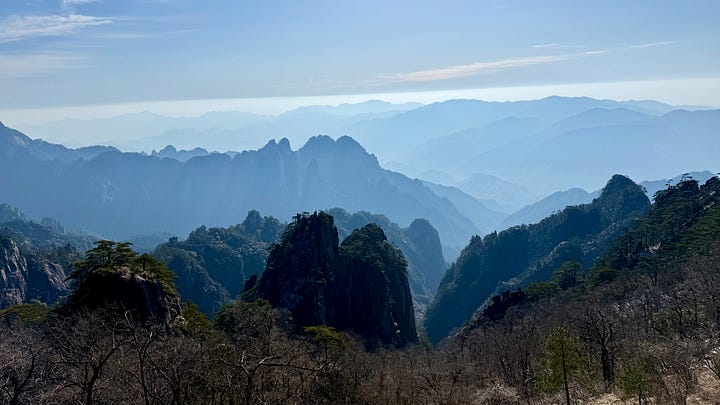
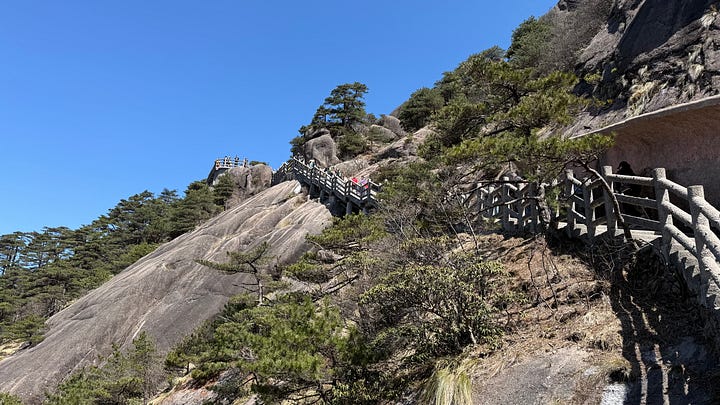

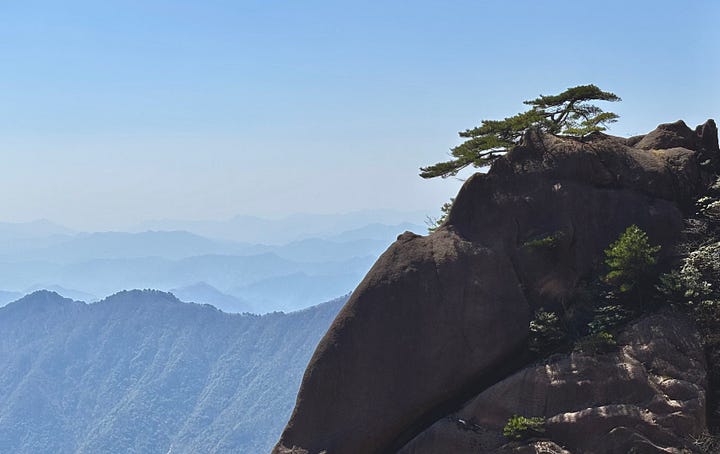
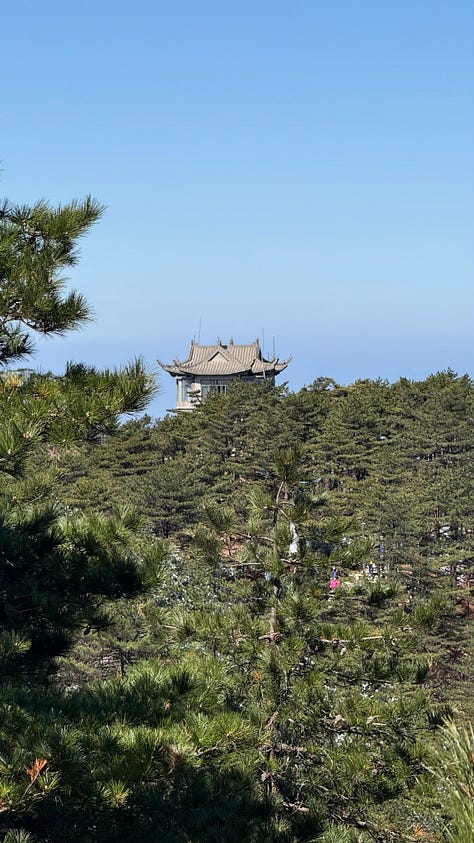
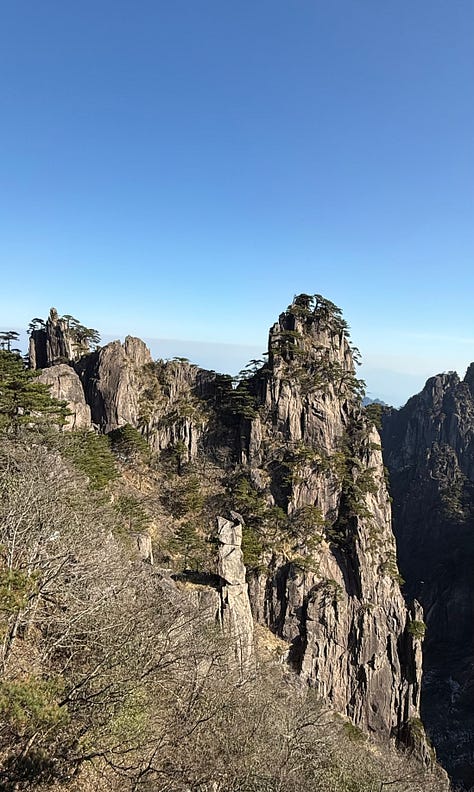
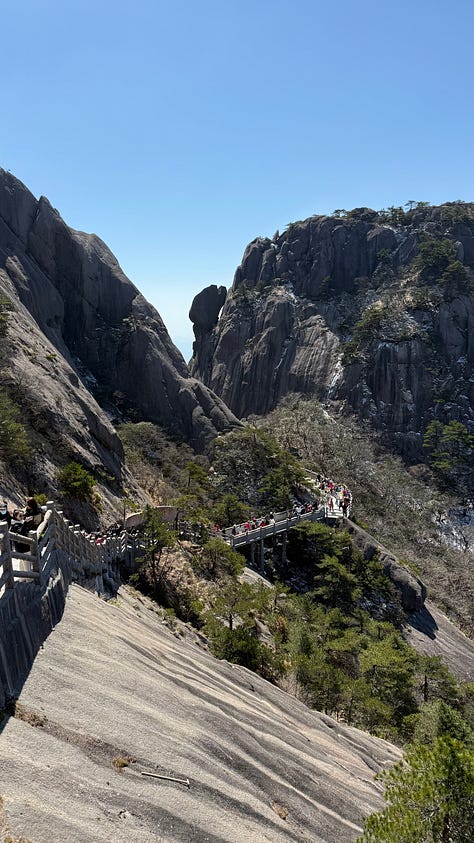
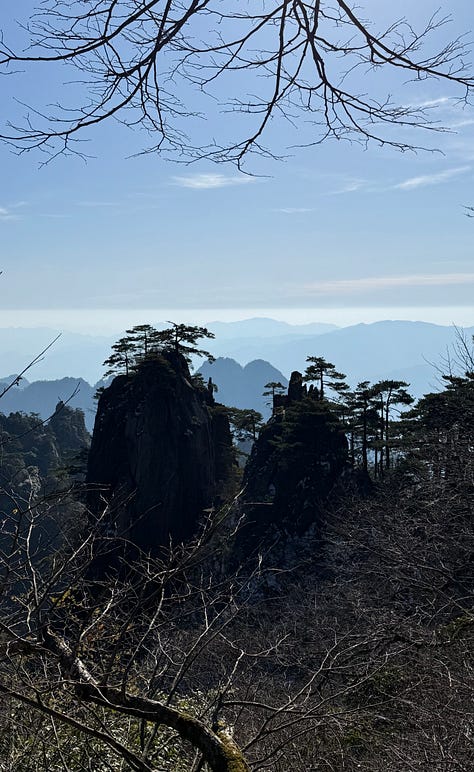
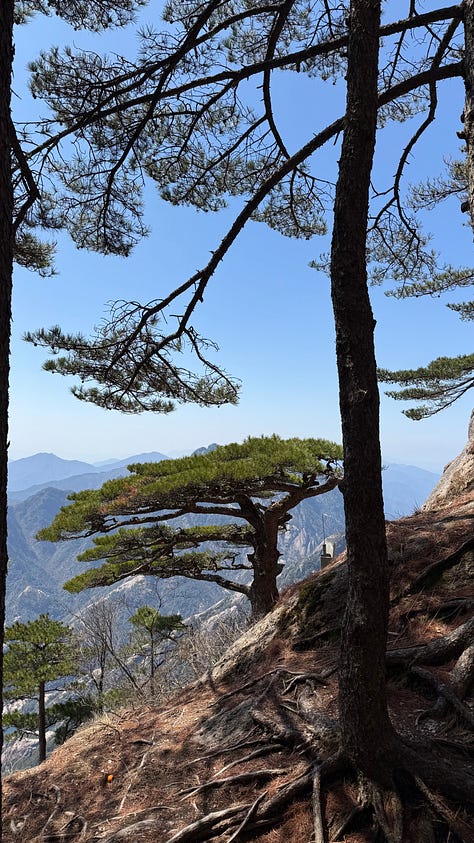
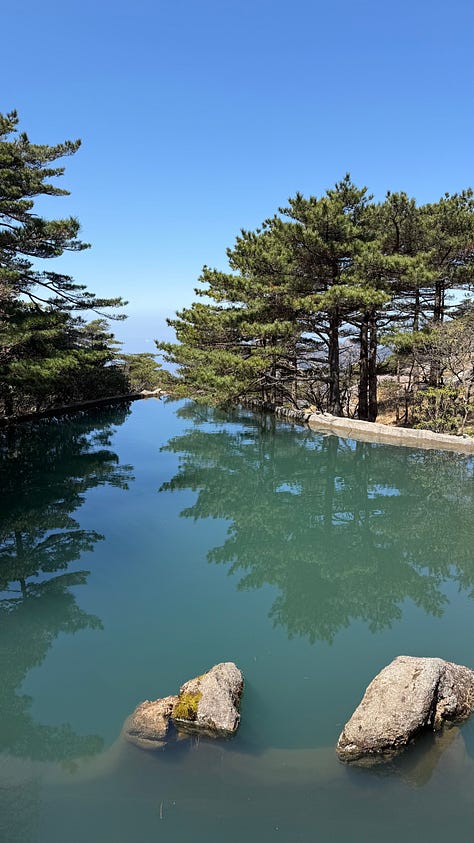
Along the way, we encountered all “trades” of hikers: some climbed the steps with ease while scrolling through their phones; some carried supplies for the mountain shops; others hired sedan chair porters; and most of us simply bent forward, counting steps and willing the summit to appear by sheer hope.
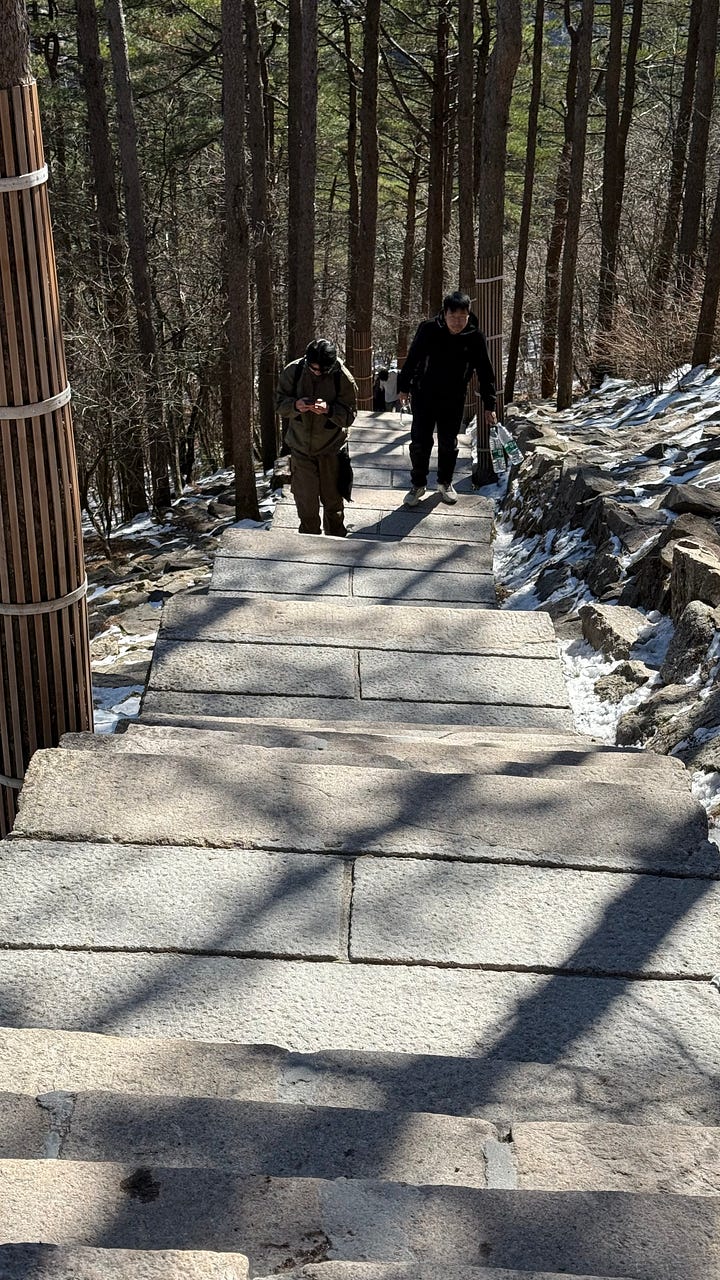
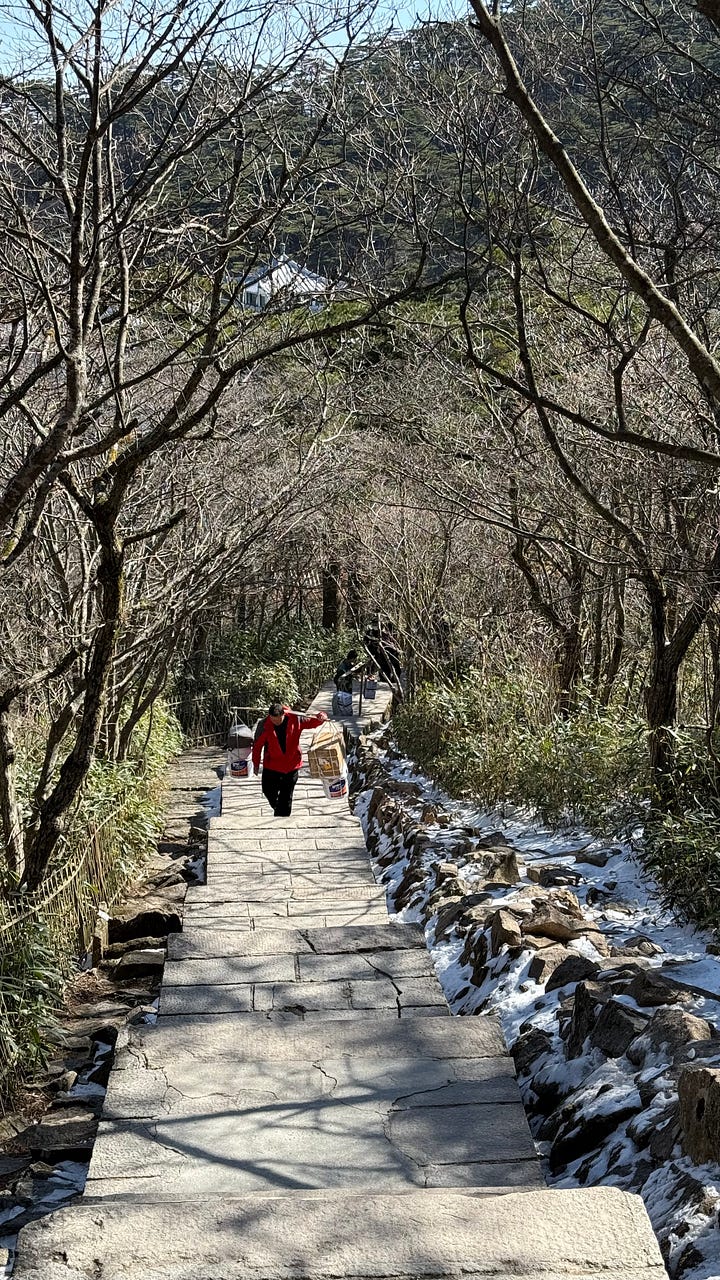
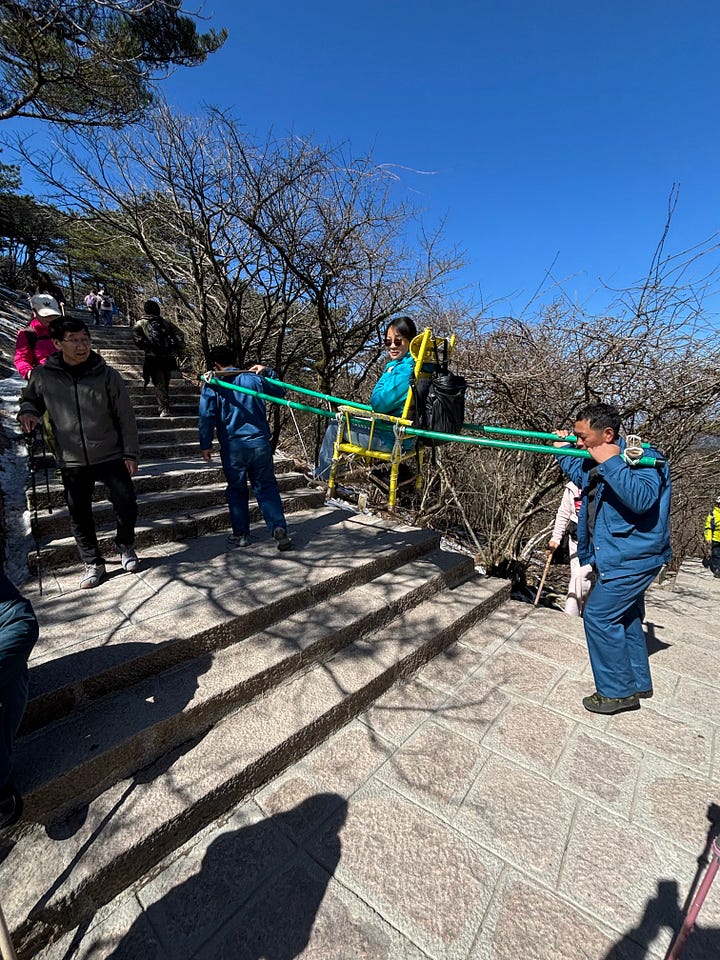
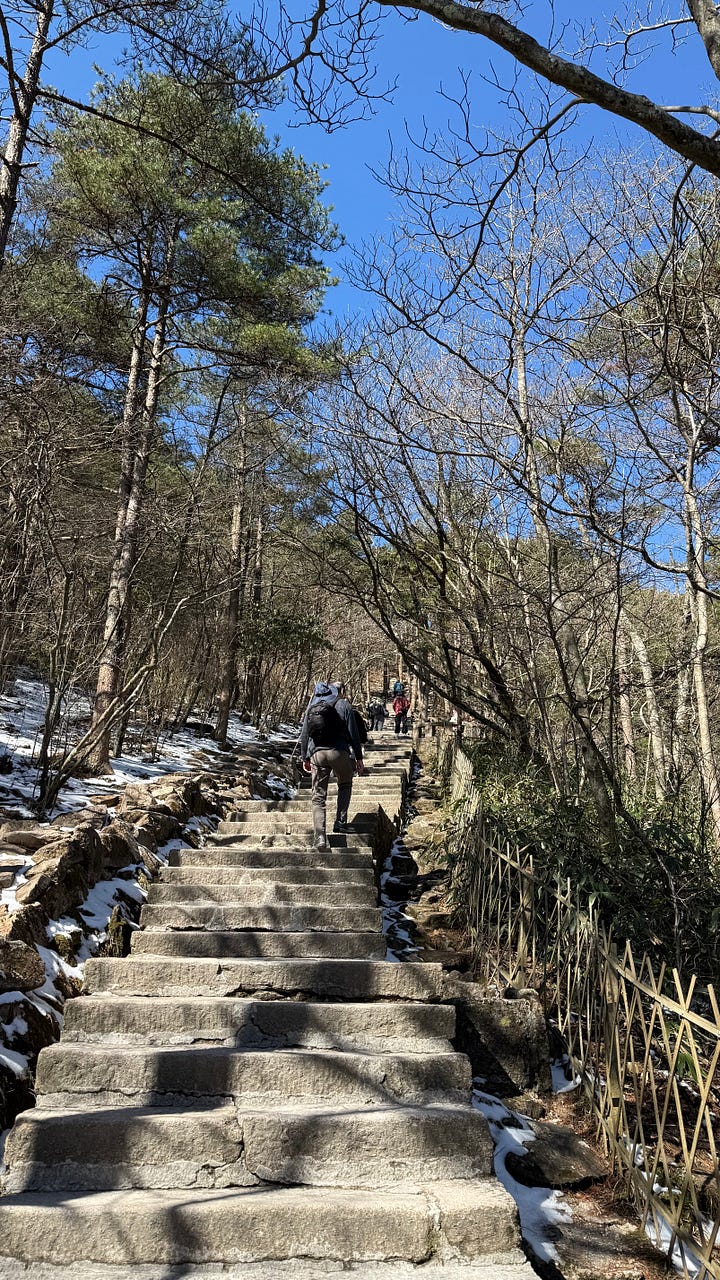
When we checked into the hotel later, climbing one flat of stairs to get to our room seemed like a herculean effort! I found out my hiking limit. 🙂
宏村 Hongcun (The Hong Village)
At the foot of the mist-veiled Huangshan mountains rests Hongcun, a village built over nine centuries ago. Time has touched it gently; its cobbled lanes and whitewashed walls remain nearly as they were, a living scroll of ink-brushed history. Recognized as a UNESCO World Heritage Site, Hongcun is cherished for its flowing water veins, historical Hui-style courtyards, and the emerald hush of subtropical hillsides.
Founded in 1131, during the Southern Song Dynasty, the village blossomed into a haven for salt, tea, and silk merchants in the Ming and Qing eras. Hongcun was developed to echo the form of an ox—its body formed by encircling hills, its horns etched in stone bridges, and its belly marked by a winding waterway that courses through every courtyard and home. This water system, both practical and mystic, offered not only cool relief and protection from fire, but also the ancient promise of feng shui: to bring abundance to those who dwell within.
Remarkably, this 600-year-old system was conceived and designed by a woman—Hu Wushi (胡重氏), the wife of a wealthy Hui merchant—in the early 15th century. Lady Hu oversaw the planning and construction of Hongcun’s revolutionary waterworks, a feat of engineering that continues to function seamlessly into the 21st century.
Fun fact: Several key scenes of the Oscar winner (Best Foreign Language Film, 2001) Crouching Tiger, Hidden Dragon were filmed in Hong Cun. The village provided ethereal backdrops with a historical and cultural atmosphere that no movie set in Hollywood could come close to.
徽文化 The Hui Culture
The Hui Culture represents an entire cultural and artistic system rooted in the heart of historical Huizhou, encompassing present-day Anhui and parts of Jiangxi. It is the soul of the savvy Hui Merchants who once traversed mountains with salt and silk; the earthy, often slightly fermented and usually dark-colored Hui Cuisine; the soaring high-pitched Hui Opera; the intricacy of Hui Carvings in wood, brick, and stone; the fragrant Hui Inksticks, paired with their sister She Inkstones—both in service of calligraphy and art. And above all, it is made visible in Hui Architecture, the most enduring signature of this storied culture.
Our hired driver, between winding roads and whispered tales, gave me a simple phrase summarizing Hui architecture that has etched itself into memory:
飛檐翘角花格窗,粉牆黛瓦馬頭牆—
Flying eaves and upturned corners adorned with latticed windows,
powdered walls and dark slate tiles crowned with horse-head gables.
The Hui-style architecture does more than shelter; it speaks. Every sweep of a roofline, every carved beam and window pane, tells a story of balance and reverence—for both sky and earth, and for the people who build and dwell in them. Though centuries have passed, Hui-style buildings remain remarkably intact, and popular—not only dotting the landscapes of Anhui but also leaving their aesthetic imprint on the pavilions and classical gardens of Ningbo, Suzhou, and Hangzhou.
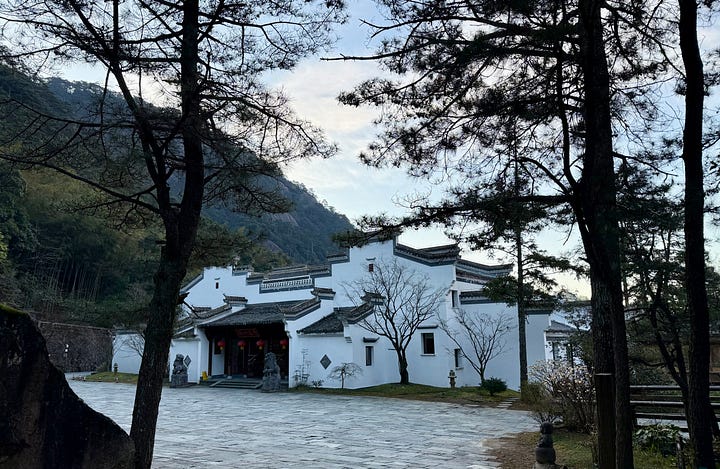
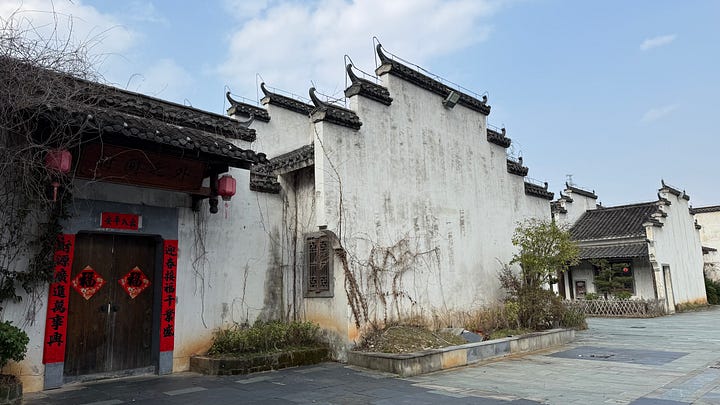
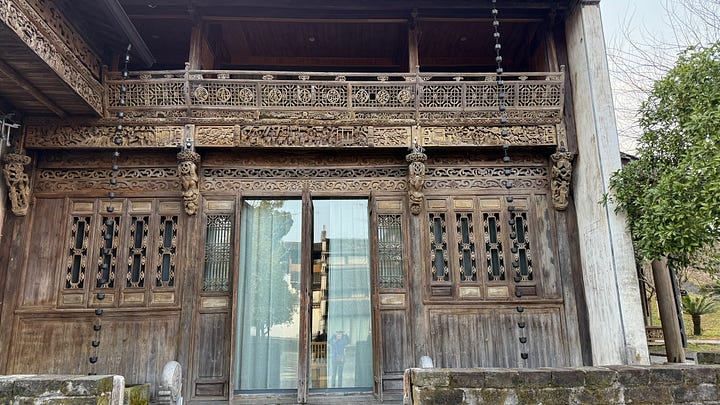
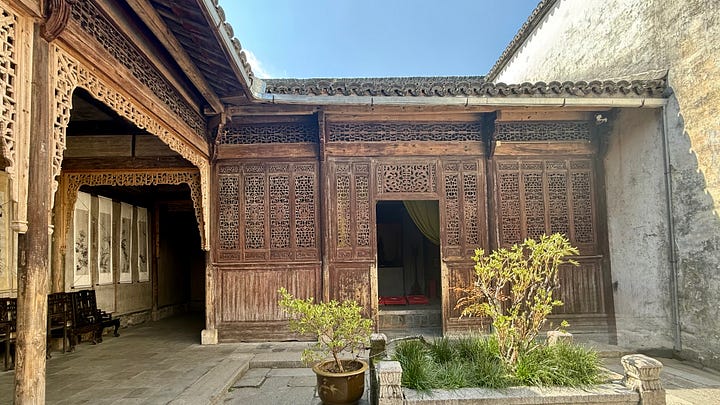
Making Hui Inksticks, the traditional way.
This fine cultural ecosystem, from trade to art, is preserved like pressed flowers between pages of time, making it a time capsule of Ming-Qing elite culture.
(Read Part III here.)
Like what you read? Click the ❤️ below, share, and subscribe to receive future newsletters.
You can read other posts directly on the Website.
The Five Great Mountains in China: 泰山 Mount Tai (Tranquil Mountain), 華山 Mount Hua (Splendid Mountain), 衡山 Mount Heng (Balancing Mountain), and 恒山 Mount Heng (Permanent Mountain).
The Yellow Emperor 黃帝: a legendary Chinese mythological figure, is considered the ancestor of all Han Chinese and a founder of Chinese civilization, credited with numerous inventions and innovations.









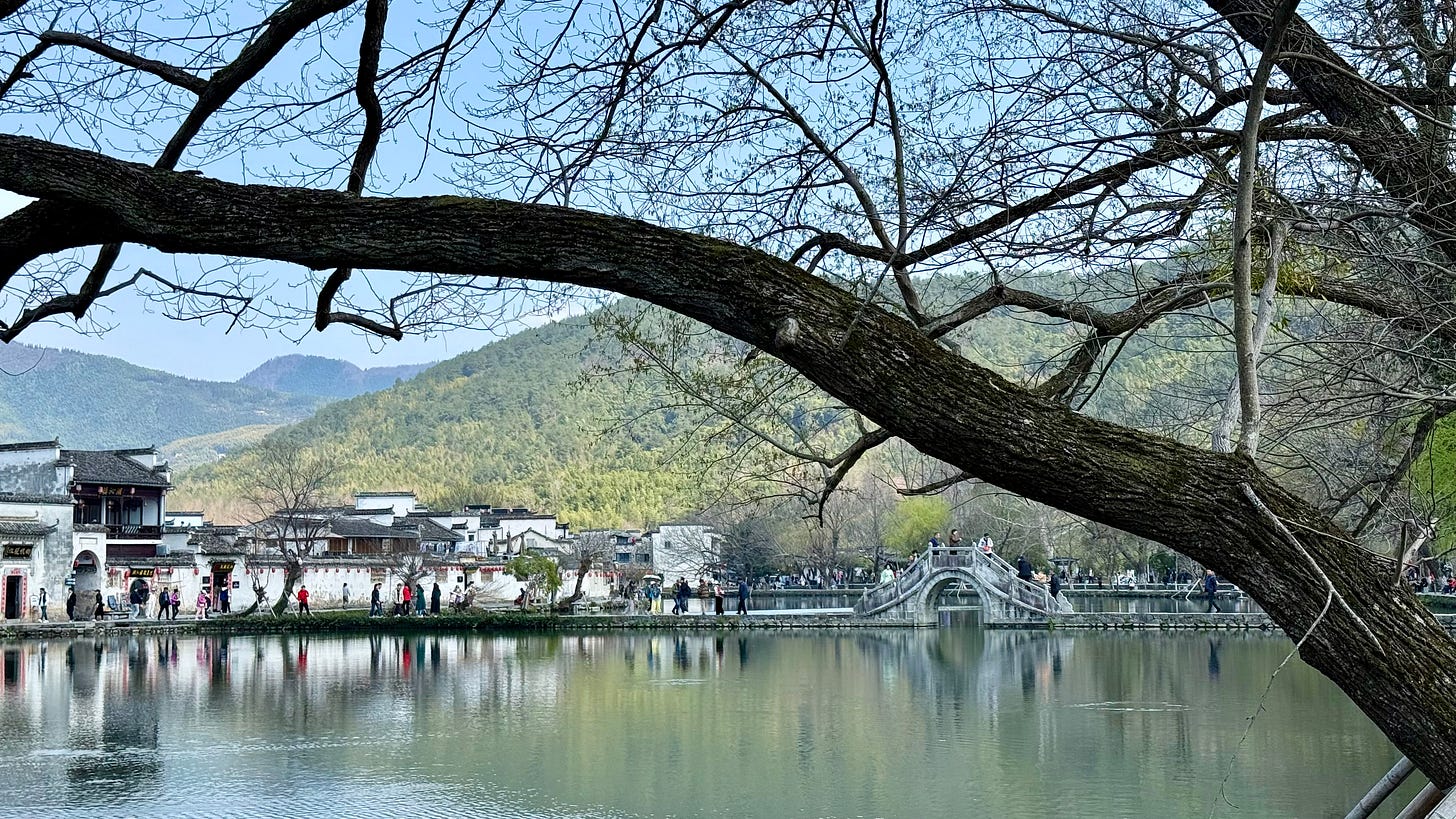
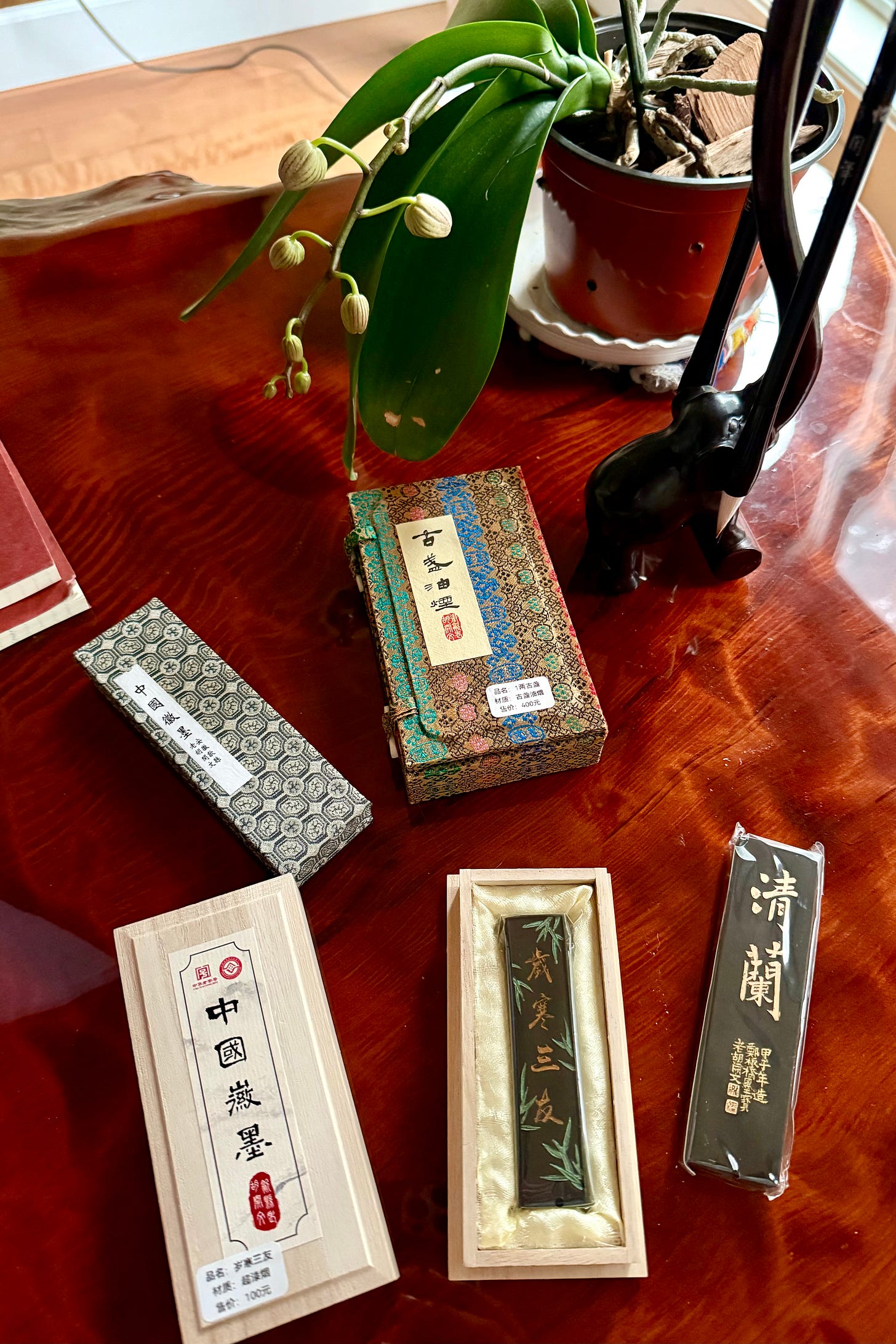
Thank you for transporting me to Huangshan and Hongcun with your pictures and words.💕
Between the (missing) sea of clouds and sedan chairs, I felt every step of the journey. Loved it.